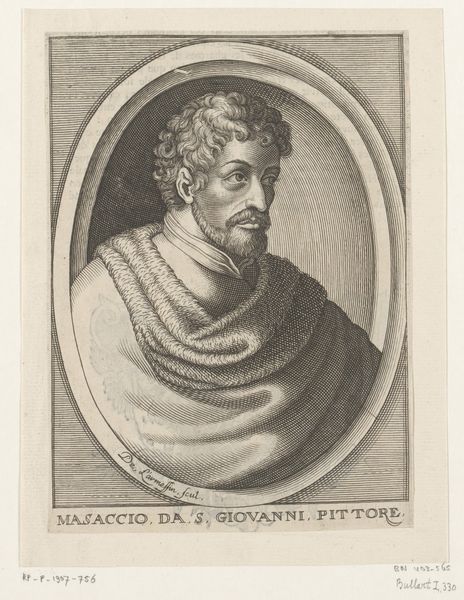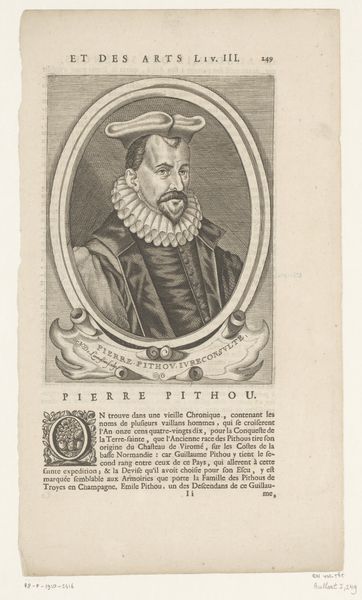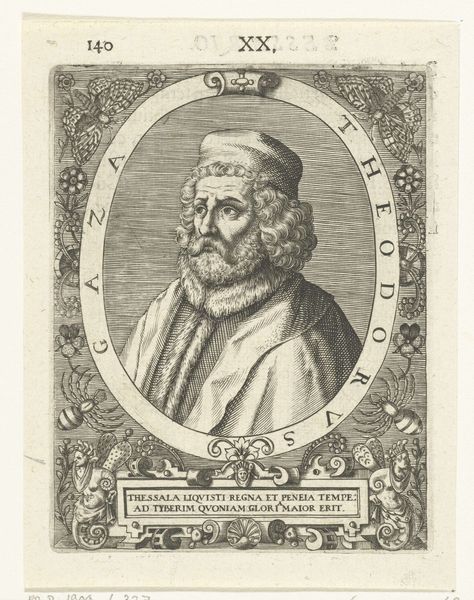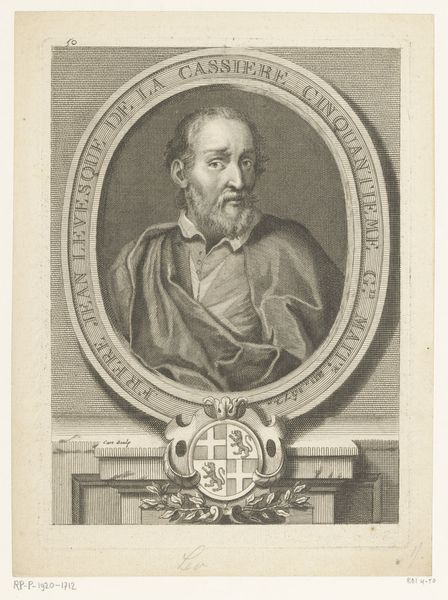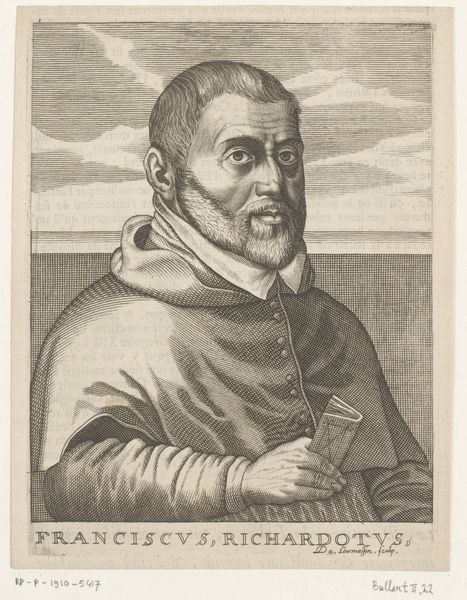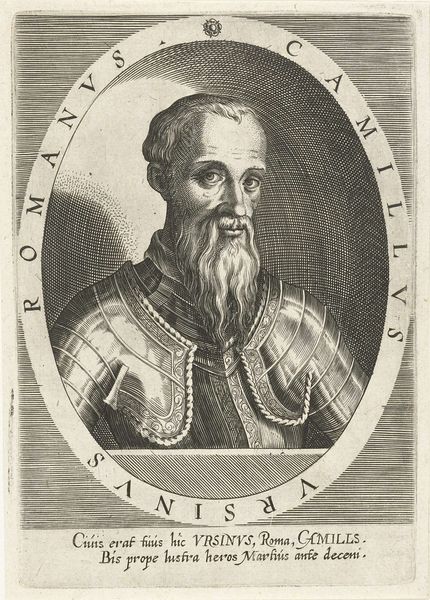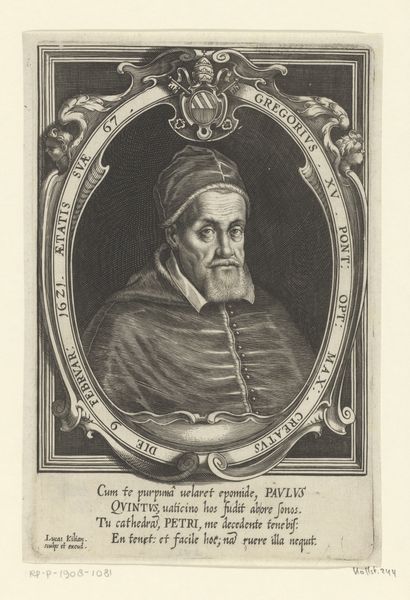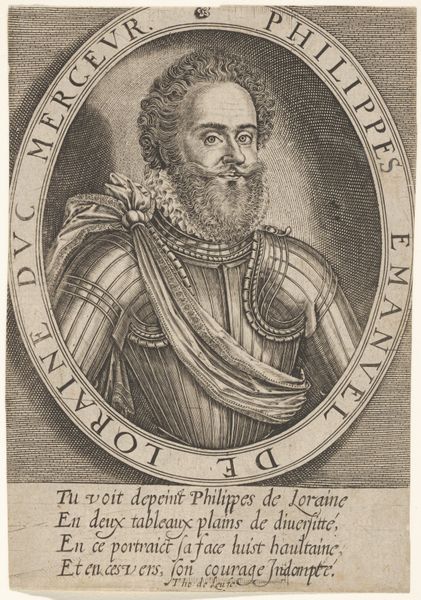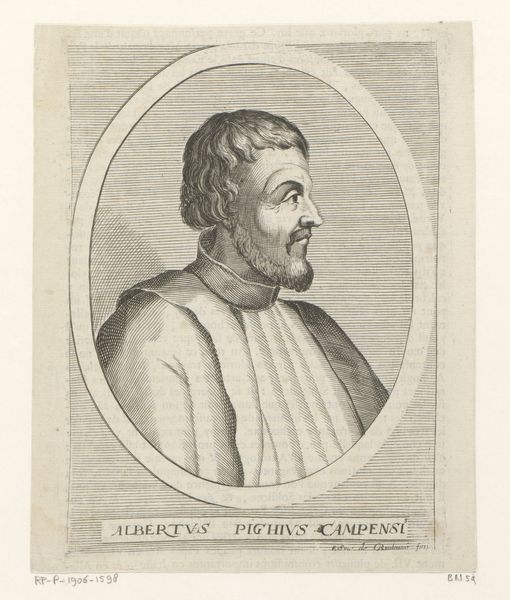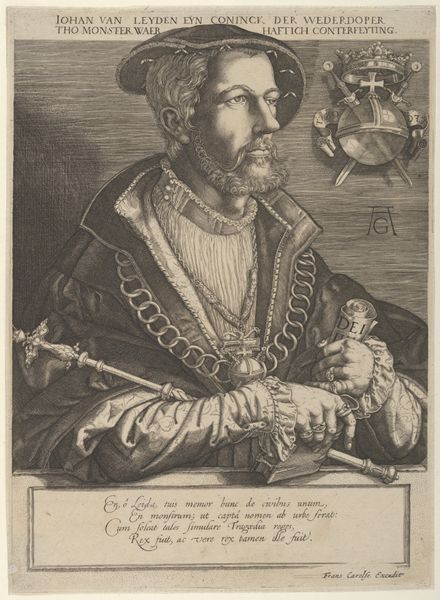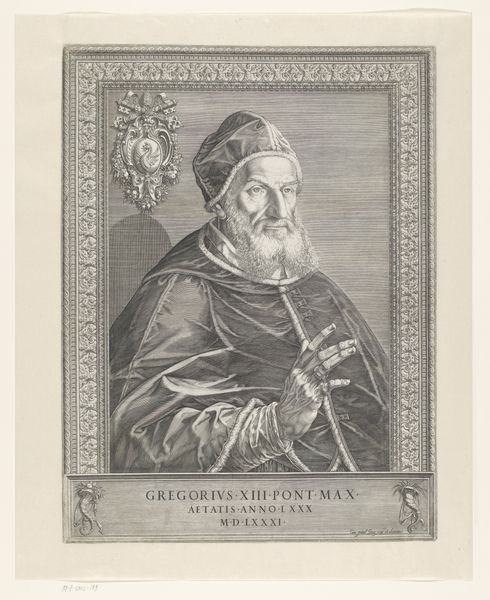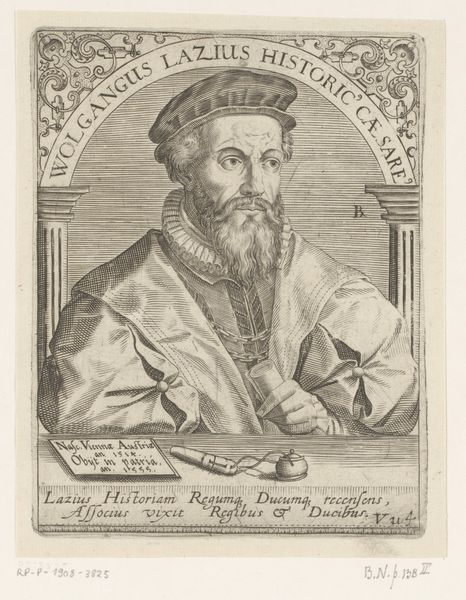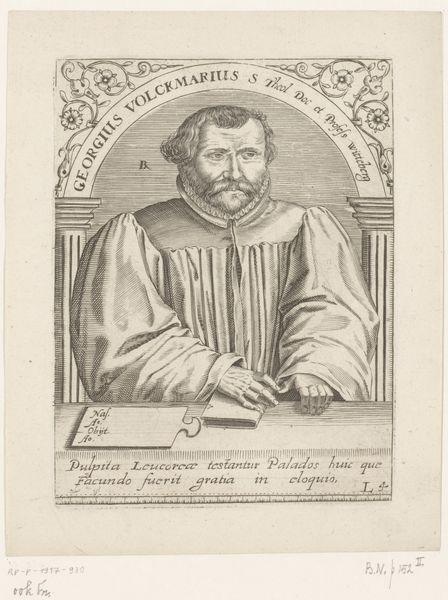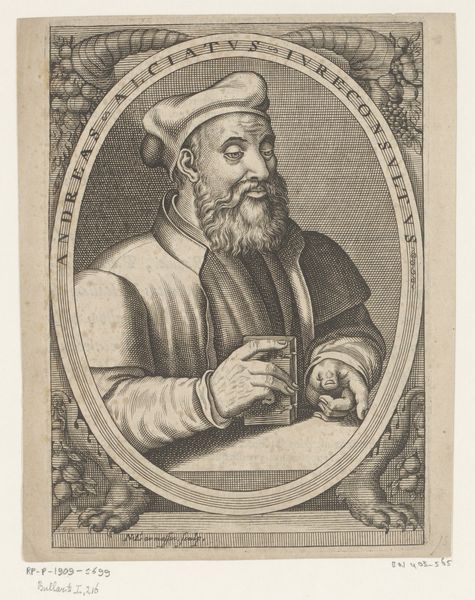
print, etching, graphite, engraving
#
portrait
#
baroque
# print
#
etching
#
graphite
#
engraving
Dimensions: height 183 mm, width 138 mm
Copyright: Rijks Museum: Open Domain
Editor: This is Nicolas de Larmessin's 1682 engraving of "Portret van Giulio Romano" housed in the Rijksmuseum. I find the intricate detailing of his garments really striking, especially contrasted with the rather severe gaze. How do you interpret this work? Curator: What stands out to me is how this portrait participates in the construction of artistic identity during the Baroque period. Consider the implications of portraying Giulio Romano, a Renaissance painter, through the lens of 17th-century aesthetics and societal values. Larmessin isn’t simply creating a likeness; he's actively engaging in a dialogue about the status and legacy of the artist. Editor: A dialogue? Curator: Exactly! Notice the prominent display of his name and profession "GIVLIO, ROMANO, PITTORE" (painter). This highlights the artist’s deliberate intention to cement Romano’s place within the artistic canon. Think about who had the power to dictate such canons. It invites questions about privilege and access within art history. Also, have you noticed the pear at the upper left corner of the artwork? Editor: No, I did not! So it is an allusion to Larmessin? Curator: Exactly! This can of course be a reference to Larmessin himself, but beyond this the artist wanted to insert himself into a network. The artist is taking its place and wants the audience to recognize its impact. This detail makes the work a fascinating statement. Editor: I see it now! This gives a whole new layer of understanding, considering issues of identity, artistic legacy, and social positioning. I'm really glad I noticed the pear detail and its function now. Curator: Me too! Art offers insights when seen as enmeshed in broader social forces. It is an important consideration for contemporary curatorial practices.
Comments
No comments
Be the first to comment and join the conversation on the ultimate creative platform.
